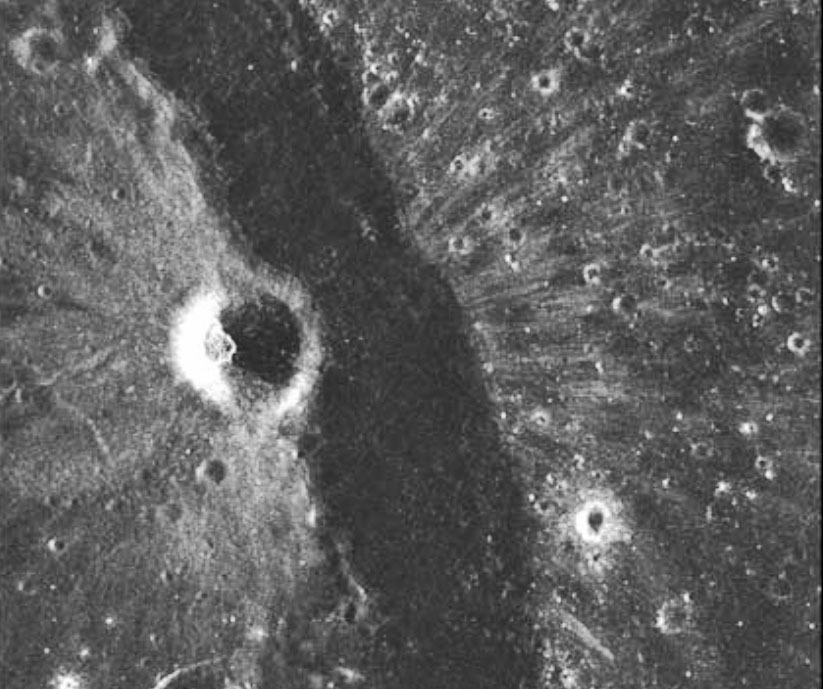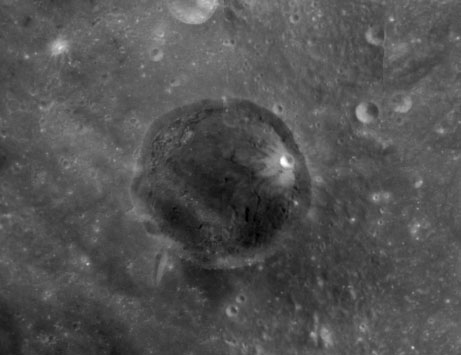January 27, 2010
Continuous And Tendrily

LRO Mini-RF SAR image by Bussey et al (2010), 41st LPSC
 Clementine image |
The diagonal dark swath on the radar image above is the east wall of Kopff crater, on the floor of the Orientale Basin. Nearly hidden (in Lunar Orbiter images) at the base of the 2 km high wall is a bright young impact crater with ejecta. The ejecta has very different character on either side of the rim. To the west it is broad, continuous and featureless gray. On the rim top of the crater (to the east) the ejecta takes the form of discrete, thin bright rays with underlying dark material between. On the Clementine image the adjacent wall of Kopff is bright with ray material that must have smashed into it. The western ends of the ejecta weren't recorded on this radar pass (and presumably will be in a future LRO high-res image), but there is no hint of tendril-like rays to the west. I wonder if irregularities in the rim crest of Kopff broke up continuous ejecta, with very local low spots letting rays of ejecta through and slightly higher areas being obstacles. There isn't much evidence for significant elevation variations along the rim... What do you think is the cause for the difference in the ejecta?
|
Yesterday's LPOD: Stratigraphy of Brightness
Tomorrow's LPOD: Radial Misbehavior
COMMENTS?
Register, Log in, and join in the comments.



